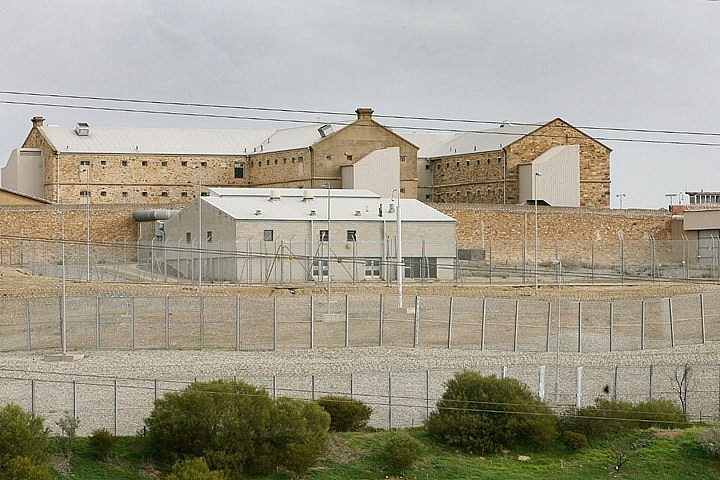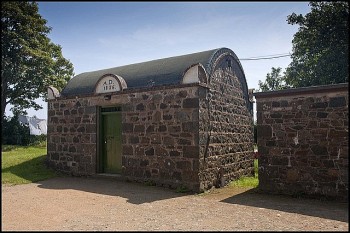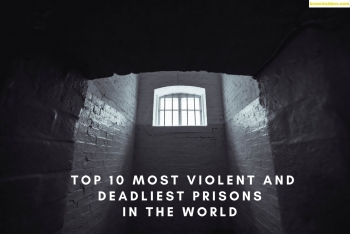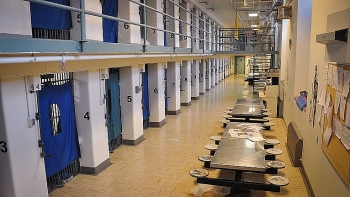How Many Prisons And Prisoners Are There In Australia Today?
 |
| Prisons/Prisoners In Australia |
| Contents |
How Many Prisons Exist in Australia?
Over the previous four decades, Australia's jail rate has skyrocketed. There were 8,900 individuals in Australia's jails in 1975; today, there are over 40,500. The number of prisoners has climbed by 355%, despite the fact that Australia's population has only increased by 86%. This has resulted in an imprisonment rate of 205 per 100,000 adult population, making Australia one of the world's fastest rising incarcerators among OECD countries.
Of these 40,500 convicts, 38% have been imprisoned for nonviolent crimes. Alternative justice methods such as electronic monitoring, house confinement, fines, tax penalties, restitution orders, and other similar measures may be preferred. These options would better serve the interests of those who bear the brunt of the consequences of crime, the victims, who have expressed dissatisfaction with Australia's tough-on-crime rhetoric, which has resulted in an overreliance on incarceration as a form of justice.
In 2021-22, $2.3 billion was spent incarcerating nonviolent offenders. A one percent reduction in the number of nonviolent offenders in prison would save taxpayers more than $23 million each year.
The criminal justice system in Australia deals with adults who commit or are alleged to commit crimes. There are 116 custodial correctional establishments in Australia (SCGRSP, 2023). On June 30, 2022, around 40,600 adults were in custody (ABS 2023b). Australia has nine legal systems, one for each state and territory, plus one for the Commonwealth. Although the criminal justice systems in each jurisdiction are similar, they remain distinct. As a result, laws, fines, and procedures for dispensing justice varied across state and territorial borders.
| Sentencing does not respond to the shift in crime in Australia • The number of offenders in Australia has decreased during the last decade. Despite this, the jail rate continues to increase. • While the number of low-risk, non-violent criminals has declined, the proportion of those sentenced to prison has risen. • More than one-third of inmates received a prison sentence of less than six months. |
Costs of the Correctional System in Australia
The Australian government spends more than $6 billion on prisons every year.
The average annual cost per prisoner is $147,900, a 34% increase over the past seven years.
Corrective services account for 26% of total criminal justice expenditure ($21 billion annually).
READ MORE: How Many Prisons/Prisoners Are There in New Zealand: Full List, History and Oldest
How Many Prisoners are there in Australia?
The criminal justice system in Australia deals with adults who commit or are alleged to commit crimes. There are 116 custodial correctional establishments in Australia. On June 30, 2022, there were around 40,600 adults in custody.
Over the decade leading up to 2022, Australia's prison population grew in both number and proportion to the total population. Despite a recent dip, the average daily prison population has increased from almost 29,400 on June 30, 2012, to around 40,600 on June 30, 2022. During the same period, the imprisonment rate rose from 167 to 201 per 100,000 adults. The most common offenses for people in Australian jails as of 30 June 2022 were acts intended to cause injury (26%), sexual assault and related offenses (16%), and illegal substance offenses (14%).
Characteristics of Prisoners in Australia
Low socioeconomic position, including low education, unreliable employment, unstable housing, and substance misuse, are associated with crime. This section gives an overview of the characteristics of inmates.
Understanding these markers is crucial for establishing effective policies to address the high incarceration rate. However, they should not be interpreted as producing or justifying crime.
Lower education attainment is linked to increased crime and incarceration rates. In Australia, about two-thirds of convicts have a Year 8 or lower education level. Additionally, 80% of inmates leave formal schooling before finishing Year 12.
Prison entrants typically have a patchier work history than the general population and are less likely to be working immediately prior to entering prison. Additionally, over half of prison entrants were unemployed within 30 days of entering prison. Less than one-quarter of prison dischargees reported having paid employment lined up after their release.
Research indicates that a significant number of former prisoners lack stable housing upon release. Additionally, a quarter of those entering prison were homeless or in short-term or emergency accommodation. Released prisoners without stable housing are more likely to reoffend and return to prison.
| Prisoners have higher rates of mental health issues, risky alcohol consumption, tobacco smoking, illicit drug use, chronic disease, and communicable diseases compared to the general population (35). Additionally, 40% of prison entrants have a prior diagnosis of a mental health disorder, such as alcohol or drug abuse. |
Health of prisonersPrisoners have greater rates of mental health disorders, risky alcohol intake, tobacco smoking, illicit drug use, chronic disease, and communicable infections than the general population (AIHW 2023). This means that individuals have significant and complex health and welfare demands, which are frequently long-term or chronic. People in prison have poorer health than the general population, and they are frequently regarded 'ancient' around the ages of 50-55 (Williams et al. 2014). |
| Imprisonment primarily affects young men. In 2022, around 93% of prisoners were male, with more than 50% being under the age of 35. Over the last decade, the male/female imprisonment ratio has remained consistent, with female convicts accounting for less than 10%. |
Conclusion
In less than four decades, Australia's prison population has more than doubled to 40,591. 38% of the convicts committed nonviolent offenses. Taxpayers spend approximately $2.3 billion annually on incarcerating low-risk offenders.
In Australia, almost 60% of the prison population had previously served a short sentence, adding to a reoffending issue.
 The World's Smallest Prison in the World: Only 2 Cells The World's Smallest Prison in the World: Only 2 Cells The world's smallest prison, with only two cells, is located on Sark Island in County Guernsey, England. This prison was constructed in 1856 and is ... |
 Top 10 Most Violent And Deadliest Prisons In The World Top 10 Most Violent And Deadliest Prisons In The World As you will discover when you read on, overcrowding is a problem in many prisons across the world. It has been reported that cells designed ... |
 How Many Prisons/Prisoners Are There In Canada:? How Many Prisons/Prisoners Are There In Canada:? In Canada, how many prisons are there? What Is the National Prison Population? How Do Canadian Prisoners Suffer? The answers can be found in the ... |
























